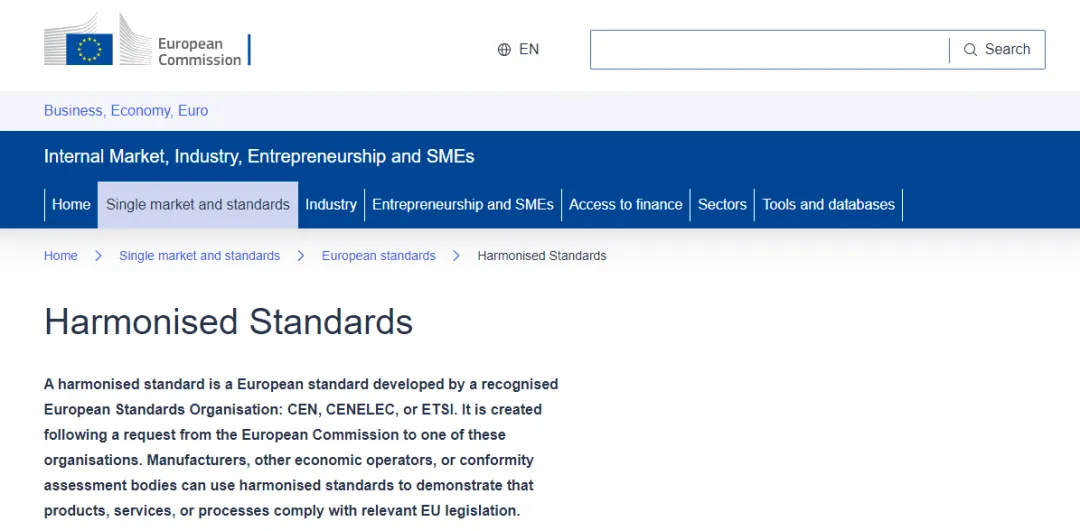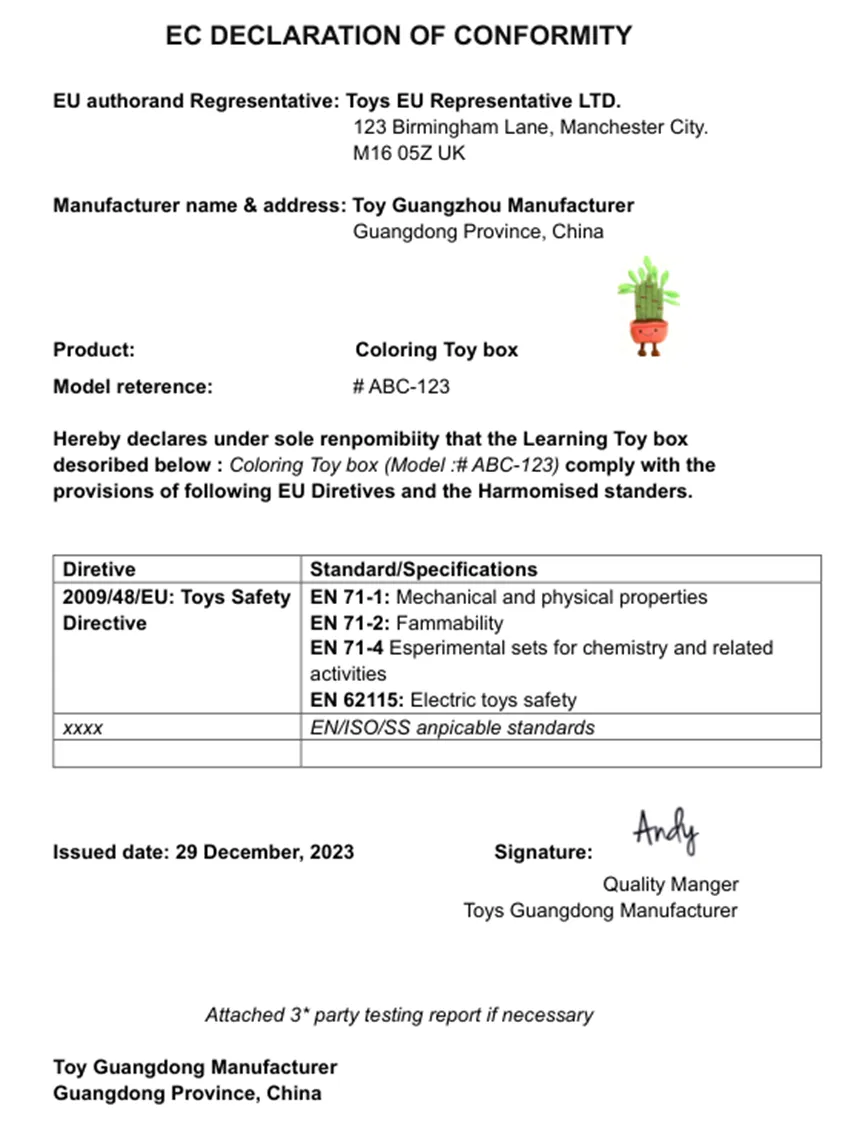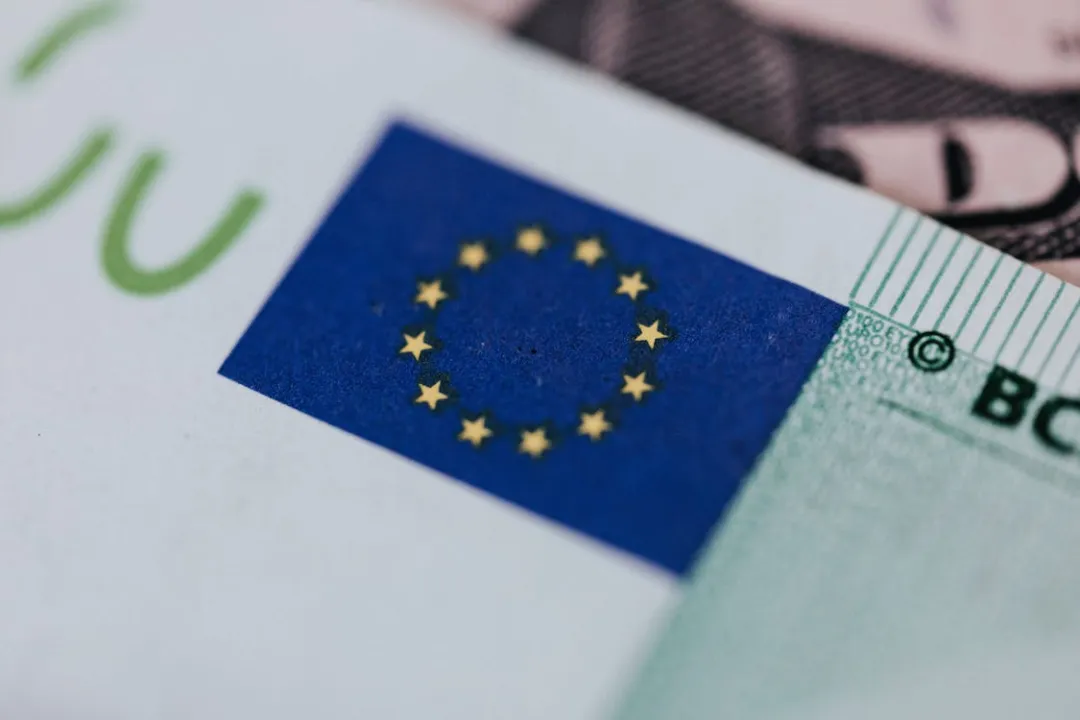
What is a DoC Compliance Document?
Recently, the TEMU platform has issued new regULations requiring products controlled by CE to provide Declaration of Conformity (DoC) or Certificate of Conformity (CoC) materials when uploading CE certification documents.
For non-compliant products, TEMU will issue risk warnings to buyers, remove the products, and notify buyers or other relevant parties to destroy/return the products.
Previously, Amazon also requiRED relevant sellers to submit EU Declaration of Conformity (DoC) documents, or else product listings would be restricted and removed.
In fact, CE certification and the Declaration of Conformity (DoC) are both passports to the European market. So, what is a doc compliance declaration? How does it relate to CE certification? How to provide a DoC compliance declaration?

What is a DoC Compliance Document?
The EU Declaration of Conformity (DoC) is a part of the conformity assessment procedure as stipulated by EU unified legislation. It is a declaration drafted and signed by the manufacturer or their authorized representative established in the EU.
DoC certification is a self-declaration mode within CE certification, declaring that the product meets all relevant product safety requirements before entering the European market.
The DoC compliance declaration document is mandatory. Additionally, the EU Declaration of Conformity must be translated into one or more languages as required by the count ry/region where the product is sold.
What Products Need a DoC Compliance Document?
In the EU market, products that require CE safety certification marks also need a compliance declaration.
Furthermore, these products must pass tests to ensure the complete technical documentation of product safety. Only after obtaining CE certification can they circulate, be produced, and be sold in the EU market.
This applies to all harmonized legislation under framework directives, including but not limited to toys, electronic products, personal protective equipment, machinery, construction products, gas appliances, recreational and private boats, pressure equipment, and measuring instruments.
For detailed information, please refer to the EU website:
(https://single-market-economy.ec.europa.eu/single-market/european-standards/harmonised-standards_en).
DoC Compliance Document Process?
For imported products, the importer must ensure that the product is accompanied by a Declaration of Conformity (DoC) and must keep a copy for 10 years after the product is placed on the market (unless specific CE directives stipulate other periods).
Notably, one product can have one DoC covering all sales models of that product.
EU Declaration of Conformity Process:
Drafting the Declaration of Conformity is a critical part of the ce marking process and is the final step before affixing the CE mark to the product.
Before drafting the Declaration of Conformity, the following must be executed:
1. Identify the product type and the relevant EU harmonized legislation it needs to meet.
2. Check whether the product complies with specific requirements.
3. Determine if the product needs to be tested by a certified body.
4. Test the product and conduct the appropriate conformity assessment as required by the regulations.
5. Fill out the conformity declaration template provided by the regulations truthfully and sign the declaration.

When drafting the Declaration of Conformity, ensure that all necessary information required by the regulations is included. If multiple harmonized legislations apply, all requirements must be met.
What Should the DoC Compliance Declaration Include?
The DoC compliance declaration must include the following information:
1. Manufacturer information: name, address, etc.
2. Product information: product name, trademark, model, etc.
3. Corresponding product safety report directives and relevant information from the safety report (must correspond to the product conformity declaration information).
4. Compliance declaration.
5. EU representative information: name, address, etc.
6. Responsible person’s signature.
7. Declaration issuance date.
Example: Below is a sample of product conformity declaration and marking for toys (for reference only):
1. Unique identification of the product (product name/model #).
2. Name and address of the manufacturer or their authorized representative, ensuring traceable product identification. It may include sufficiently clear color images for product identification if necessary.
3. Purpose of the product conformity declaration in line with relevant EU harmonized legislation (e.g., 2009/48/EU: Toy Safety Directive).
4. Reference to relevant harmonized standards related to the declaration (e.g., EN71-1: Mechanical xxx).
5. When applicable, the notifying body (name, number) performed the (standard) and issued the certificate, with the representative (general manager/quality manager) signing.

Who Can Sign the eu doc Compliance Declaration?
The EU DoC compliance declaration must be issued and signed by the manufacturer or importer of the product, not by a notified body or testing institution. When the product is imported from a non-EU country/region, the importer is responsible for ensuring the product meets all legal requirements and that the technical documentation (including the declaration) is correct and available.
Besides the manufacturer, the compliance declaration can also be signed by the manufacturer’s authorized representative. The authorized representative is a natural or legal person established within the European EconoMIC Area.
Although the content of the compliance declaration is simple, details can easily lead to errors, potentially invalidating the declaration. Common errors include:
- The document is titled as a certificate instead of a declaration.
- Using "CE Declaration" instead of "EC Declaration" or "EU Declaration."
- Incomplete standards and directives.
- Missing signature.
- The person signing the DoC does not work at the company or does not hold an appropriate position.
- The signature date precedes some prescribed standards or directives.
- Misleading or confusing conformity declarations (e.g., including unrelated standards).
- Incorrect or incomplete writing of standards, etc.

Therefore, manufacturers or distributors inexperienced with CE certification should seek professional help. JJR Laboratory can assist you in completing CE certification and DoC compliance declarations.
Email:hello@jjrlab.com
Write your message here and send it to us
 What Certifications for Exporting Monitors to Euro
What Certifications for Exporting Monitors to Euro
 Bluetooth Headphones Exported to Australia Certifi
Bluetooth Headphones Exported to Australia Certifi
 What Certifications for Router Products Exported t
What Certifications for Router Products Exported t
 TIC (Power Bank UL 2056, Portable Power Station UL
TIC (Power Bank UL 2056, Portable Power Station UL
 How to get EN 18031 Certification for Wireless Pro
How to get EN 18031 Certification for Wireless Pro
 PSE, TELEC and VCCI Compliance for Cameras Exporte
PSE, TELEC and VCCI Compliance for Cameras Exporte
 NOM & IFT Compliance for Audio Equipment Expor
NOM & IFT Compliance for Audio Equipment Expor
 FCC, CE & EMC Compliance for Printers Exported
FCC, CE & EMC Compliance for Printers Exported
Leave us a message
24-hour online customer service at any time to respond, so that you worry!




